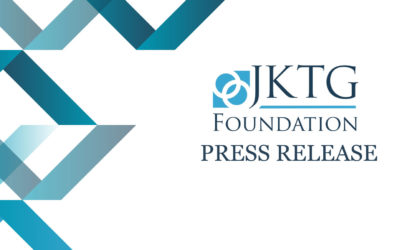
Political strategist James Carville, when advising Bill Clinton’s Presidential campaign, hung a sign in Clinton’s campaign office reminding everyone of a key issue impacting Americans: “the economy, stupid!”
Fast forward 20 years and a similar topic is impacting Americans: the cost structure, stupid!
Organizational structures of the U.S. healthcare system as well as tax-exempt foundations have become taller and taller and with this height growth has come tons of indirect costs.
Much of this cost has never been subjected to question – it just grew presumably to address a particular evolutionary issue. As revenue streams expand, it is easier to spend the revenue expansion on new management levels versus senior executives broadening their personal expertise and bandwidth.
Boards of directors have not historically scrutinized or challenged management on costs and program expansion, but considering U.S. national health expenditure share of the GDP is at an all-time high (19.7%), it’s likely the field as a whole will need to contract current practice and therefore indirect costs are appropriately a target for contraction and/or redeployment.
The healthcare landscape: There is much change in the healthcare system now, but even more change will occur in the coming decades. Healthcare leaders are focused on staff composition needed for new and evolving services such as telehealth, but most are not focused on the current cost structure and what can be done to create funds through a redeployment of current dollars.
Rather, it is easier to ask for more funding. This allows the associations that represent providers to prove their value and lets the today’s healthcare executives out of the task of leading. Consider current “thought leaders” – these are often the senior executives whose decisions have gotten us to where we are. Perhaps some degree of caution or skepticism is warranted in listening to their thoughts on the future.
Redeployment of costs: Dealing with the redeployment of cost is not an easy task. It requires an understanding of where the organization needs to evolve; developing a plan; and then executing that plan. There is risk in doing this – risk for the leadership. Many leaders opt for more funding or they retire. Nonetheless, the cost structure needs to be examined and adjusted.
Growth in the C Suite: Rapid growth of the healthcare system through the acquisition of physician practices and new companies, becoming healthcare insurers, and ever-increasing charges to patients, has resulted in larger management teams.
Inflated C-Suites now reflect a variety of specialists who manage new functions as opposed to the current leadership learning those business lines. This has led to taller and taller organizations. [A crude measure of this is that the CEO might have very few folks directly reporting to them.]
Often, leadership structures don’t foster career evolution nor encourage movement and growth. Rather, it encourages staying at one organization, playing it safe and not changing to a different line of management and learning.

The concern is that any criteria other than performance will invariably lead to unqualified folks having positions they are not qualified to possess or not ready to assume. So, in these extreme changing times, we have the high potential of having folks at the top that are not ready. It’s a mess.
At the same time, the internal growth of these organizations yields tons of indirect cost which in turn must be borne by the direct cost components (typically revenue producing or care providing).
In short, the top executives have stopped growing and expanding their responsibilities and professional portfolios, instead adding to their teams, which has the effect of further and further removing them from the ultimate consumer – the patient.
These indirect costs have become enormous and are beginning to hinder organizational mobility and flexibility – organizations can’t change directions. These indirect costs need to be critically examined and reduced and perhaps redeployed. This is a tough task.
Questioning Indirect Costs: Most not-for profit organizations are currently like this, so it is not unique to healthcare. Foundations and the government have it in en masse.
Adding levels and increased management structure tends to make organization more bureaucratic and less flexible. In fact, most large entities are or become bureaucratic and decision making can be impaired. But merely because we have a problem does not and should not mean we should tolerate it, ignore it, or not address it.
I addressed indirect costs in a recent Ted Take on charitable giving to tax exempt foundations. Healthcare systems are no different. I suggested looking at the organization’s publicly available IRS Form 990. Notice things like; 1) the proportion of indirect costs to total costs, 2) the amount of fundraising costs to total costs, 3) the top executives pay costs relative to total costs, then ask – is this what you want your money going to and are these costs appropriate and reasonable and are they needed?
Realistically, tax exempt and healthcare boards of directors are generally in the tow of the senior executives; however, boards should be advisory and question what’s being proposed or planned and critically review the related costs. For our charitable and research investments, we simply do not allow these excessive indirect costs.
Conclusion: Don’t be a “sheeple” (someone that just follows or is part of the status quo) and question all costs (additions and existing) being proposed. If you start questioning, this will begin to change things which is the reason I’m writing this – to raise the question. Flippantly, my view can be summed up by a quote of the Joker in the first Batman movie in referring to the Gotham City leadership – “This place needs an enema.”
Featured news
JKTG Foundation targets effective treatments for triple-negative breast cancer
The Jayne Koskinas Ted Giovanis Foundation for Health and Policy (JKTG Foundation) today announced funding to develop a prototype multiscale model designed to predict therapeutic responses of tumor ecosystems – a new frontier in breast cancer research.
Ted’s Take: There are no stakeholders, it’s just US
The word “stakeholder” really bothers me particularly in the healthcare space. I’m struck by a quote by Ken Burns.
“The thing that I’ve learned is that there is no ‘them.’ This is what everybody does: make a distinction about ‘them.’ It’s just ‘us’.”
Ted’s Take: The Last Tenth
In racing, we measure this in lap times often down to the second or tenths of a second. A recent racing article provoked me to think about the pursuit of “the last tenth” of a second in improvement which is typically the toughest and most difficult to attain.

Jayne Koskinas Ted Giovanis
Foundation for Health and Policy
PO Box 130
Highland, Maryland 20777
Media contact: 202.548.0133


